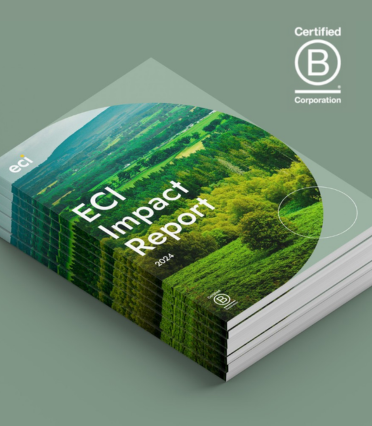SMEs are the backbone of the economy, and their ability to succeed will be key to the UK’s recovery post-pandemic (even if at time of writing, the phrase post-pandemic feels depressingly optimistic!) There is no doubt that there are challenges ahead for SMEs, however there is also a fantastic cohort of businesses on hand and advice to help them overcome them and not just survive, but thrive, in 2022.
1. Managing rising costs
With the UK experiencing its highest inflation rate in a decade, it’s no surprise that when ECI portfolio company, Bionic, surveyed SME business leaders, they saw ‘Managing Costs’ as their second largest challenge, beaten only by ‘Operating during Covid-19’. In particular, rising energy prices have been a big challenge in 2021, and given Brexit, gas shortages and high demand for liquified gas from Asia, we’d expect that to carry on into 2022. So now should be a good time for business owners to shop around and make sure they’re getting a good deal, but given everything else that 2021 has thrown at us – it’s no surprise that procurement often gets deprioritised. Companies such as Bionic can help – a marketplace for SMEs to switch essential services such as energy, telecoms, finance and insurance. It also allows business owners to outsource their procurement needs to experts who can leverage technology to make sure they’re getting the best deal without losing sight of their top business priorities.
2. Hire struggles
Nick Kirk, UK Managing Director at recruiter Michael Page, says that, “In my 25-plus years within the recruitment industry, I can honestly say that I’ve never witnessed such a hot, candidate-driven market.” I imagine that’s not totally surprising – the combination of an aging population, Brexit, staff looking for more from their employers post-pandemic, and the widening skills gap in areas such as tech, means that most companies are coming up against this problem. Our advice? Don’t panic is the first one! The temptation is to try and fill roles as quickly as possible, which means you’re likely to rush into the wrong hires and spend more time fixing your mistakes. The second is to honestly assess why someone would want to join your company – candidates are expecting higher wages, more flexibility, a company culture they can buy into, visibility on diversity and inclusion and ESG progress, challenging and interesting work with opportunities to be mentored and progress. If you want to hire the best talent, you’ll need to score highly across these areas and be able to effectively sell them.
A quitter’s market
Each line represents the number of people quitting per month in the US, leading to them coining the term ‘The Great Resignation’ in 2021.
3. WFH v Company culture
You may have noticed in the above paragraph on challenges for hiring, that I say candidates want both more flexibility and a culture they can buy into – but how can remote working create a fantastic culture? And given that companies with healthy work cultures provided three times more returns to shareholders during the pandemic, what should you prioritise? The truth is you have to do both especially if you want to retain staff. So 1) When can you use opportunities of people being together for high-impact moments of company culture and collaboration? 2) If you need people in, explain why, and back up your assertions with data so it feels fair. 3) Continue to use digital tools to create one experience, no matter if you’re in the office at home. 4) Be even more transparent about the purpose of your company and motivate people behind that both when they’re in the office and when they’re remote.
4. Customer channel complexity
Customer engagement with SMEs is getting more complex. A recent Zendesk survey showed that 60% of customers use more than one channel to contact customer service, and the majority want the option of accessing both human and technology-based services. At the same time, they want consistency of experience, no matter how they’re contacting you. Managing all this in-house can be tricky. Contact-Centre-as-a-Service is one solution for SMEs, with companies such as ECI portfolio company, Moneypenny, offering outsourced telephone answering, live chat, switchboard and multi-channel customer services. And as Moneypenny works with companies to reflect how they speak to their customers, the customer is none the wiser as to whether it is in-house or not, they are just getting the service they want in the way they want it.
5. Global supply chains
Supply chain disruption due to Covid heavily impacted 2021, and with the Omicron variant that is likely to continue into 2022. Logistical supply chain software can help SMEs to have better visibility of products in their supply chain, meaning they are less likely to be caught off guard if there is disruption. Mark Keeley – Partner at ECI – says the lesson he learned whilst on the Board of pet food business MPM was that the key to overcoming supply chain problems comes down to relationships: “It may seem counterintuitive in a pandemic, but the key to your global supply chain is to travel, and meet face to face with suppliers, be open about your plans and pay them when you say you will. Have someone on the ground close to them and truly develop a partnership, working together to solve problems. It’s not about the cheapest supplier, it’s about a respectful relationship that works for both parties.”
6. The funding crunch
A combination of government support schemes coming to an end and banks’ lending criteria becoming stricter post-pandemic means many SMEs are facing a real funding crunch, especially given the Omicron variant has led to some increased restrictions not yet matched by government support. SMEs should make sure that they are aware of the ‘Pay-as-you-Grow’ scheme, an initiative which has been introduced to give companies more time and flexibility to repay some of their Bounce Back Loans. However, it is likely that in 2022 many SMEs will need other business finance support options – the good news is that companies like Bionic offer a route for SMEs to easily compare business loans, using state of the art tech to find a responsible lender and managing their application to increase their chance of being approved.
2022 may be starting to feel a bit like 2020 too, but despite the challenges outlined above, actually SMEs have learned a lot from the past two years and are in a much better place to navigate through any challenges ahead. And there is help at hand from a whole host of SME services, who are increasingly leveraging the power of technology to allow business owners to focus on their key growth priorities and continue to grow in the year ahead.



